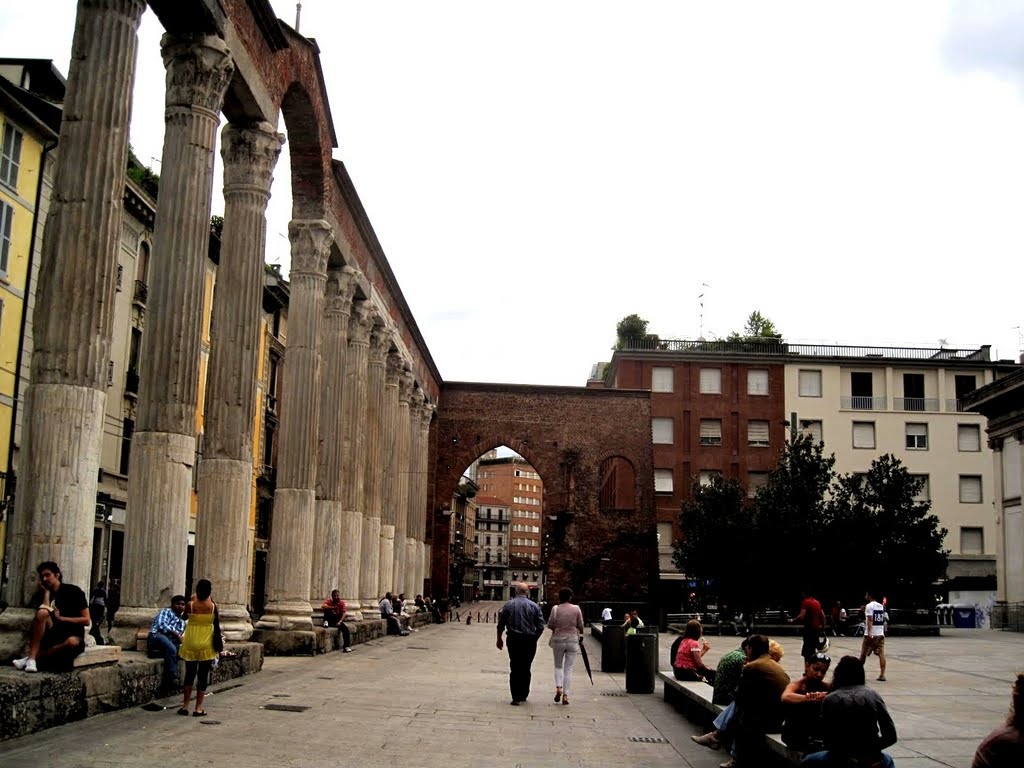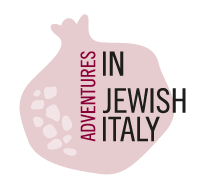 There is a daily Milan, which is ordinary, chaotic, bustling, neurotic, always in a hurry. But this is only a small side of the city that is instead characterized by many hidden corners and surprises which only the most watchful people are able to catch. You can think for example about the southern part of Milan, in particular the area included between Corso di Porta Ticinese and Darsena. They are only 500 meters but there you can admire a never-ending succession of banister houses, small streets, living squares and glimpses of legendary times. Along this small itinerary – one of the areas nightlife people like most – you can find three of the most symbolic sites in Milan to which the inhabitants of the metropolis are really endeared.
There is a daily Milan, which is ordinary, chaotic, bustling, neurotic, always in a hurry. But this is only a small side of the city that is instead characterized by many hidden corners and surprises which only the most watchful people are able to catch. You can think for example about the southern part of Milan, in particular the area included between Corso di Porta Ticinese and Darsena. They are only 500 meters but there you can admire a never-ending succession of banister houses, small streets, living squares and glimpses of legendary times. Along this small itinerary – one of the areas nightlife people like most – you can find three of the most symbolic sites in Milan to which the inhabitants of the metropolis are really endeared.Columns of San LorenzoThe first one is the Basilica of Saint Lawrence (San Lorenzo Maggiore). Place of worship during the Roman period, the Basilica was built between the late 4th and the early 5th Century. It is one of the oldest churches in Milan and for this very reason this Basilica had a leading role in the whole history of the city, also sharing the most difficult and glorious days of Roman Milan. In front of the Basilica, a few steps away from the Medieval Porta Ticinese, you can find the Columns of San Lorenzo, that were built during the Roman period, too. They represent for all Milan citizens, especially for young people, an irreplaceable meeting point for summer nights. They are the ideal setting for those who wish to spend an evening, drinking a beer, chatting and sometimes watching or participating in amusing dances. This place make people understand the real spirit characterizing Milan nightlife and its vibrant social dimension.
Until 1935 the area between the Church and the columns was occupied by old buildings and the facade of the basilica was completely surrounded by old houses. The renovation plan decided to open the square, breaking down an extremely picturesque city corner, popularly known for its mysterious and legendary stories.
Continuing along Porta Ticinese towards Piazza XXIV Maggio, you can find the Basilica of Sant’Eustorgio, another ancient and precious example of the several Milan churches. Built in the 4th Century, its importance is mainly due to the legend of the Three Magi. It is said that the cart carrying the relics of the Magi inexplicably stopped. The wheels were heavy like boulders so that oxen and horses could not pass on. Thus the Bishop, Eustorgius, had to abandon the idea of preserving the relics of the three Saints in the Cathedral and had to build the Basilica outside the city walls.
Later on, Frederick Barbarossa sacked the famous relics, that came back to the Milan Basilica from Cologne – where they had been brought – only in 1906. Inside of Sant’Eustorgio there are a Romanic building and several frescoes attributed to Giotto’s school. The bell tower includes 6 bells and, in memory of the Three Kings, it is surmounted by a eight-pointed star instead of the traditional cross.
After crossing Piazza XXIV Maggio towards via Gorizia, you will find Darsena which is undoubtedly one of the most visited places in Milan. Point of convergence of Naviglio Pavese and Naviglio Grande, it constituted for many decades the harbor of Milan, a place dedicated to trade and, above all, an almost unique hydraulic system.
The Darsena was one of the most important Italian harbors, but its history was characterized by continuous upsets and variations. Developed in the 16th century, it suddenly became a symbol, Milan population identified with. In recent times, particularly in the 70s, the Dock represented the bohemian and popular heart of Milan, with its famous inns where people met till late at night to drink and talk about dreams and revolutions.
Nowadays, after escaping from a crazy project aiming at creating a car park, Darsena has known a spontaneous rebirth thus becoming a sort of “clandestine oasis”. In the meanwhile other works are waited in order to give new life to Navigli area. In spite of this difficult period, Darsena has remained a focal area in Milan and it is continuously visited both during the day and at night, when hundreds of people run across it along their night itineraries.
» Milan Tourism, the official website
Что смотреть в Милане: три
символичных и легендарных достопримечательности
Есть повседневный
Милан, который кажется обычным современным деловым городом: хаотичным, шумным,
нервным, всегда спешащим. Но это только одна из его личин, в этом городе много
потаённых уголков и он скрывает много сюрпризов, которые открываются только
самым наблюдательным. Например, присмотритесь к южной части Милана, в
особенности кварталам между Корсо ди Порта Тичинезе и Дарсеной. Это всего
Колонны Сан-Лоренцо Первое из таких мест — базилика Св. Лаврентия (San Lorenzo Maggiore). Базилика была построена в конце IV—начале V в. н. э., в ней молились ещё в Римский период. Это одна из самых древних церквей Милана, и поэтому она играла ведущую роль в истории города, разделяя с ним в Римскую эпоху и радости, и трудности. Перед базиликой, в нескольких шагах от средневековых Тичинских ворот, вы увидите колонны Сан-Лоренцо, также воздвигнутые в Римский период. Это традиционное место встречи летними ночами для всех миланцев, но особенно для молодёжи. Колонны ‑ идеальная декорация для тех, кто хочет провести вечер за кружкой пива и разговорами, наблюдая, а иногда и участвуя, в зажигательных танцах. Это место даёт представление о том, какой дух царит в ночном Милане и как живут его обитатели.
Вплоть до
Продолжая идти дальше по улице Тичинских ворот в сторону Площади 24 мая, вы увидите базилику Св. Евсторгия (Sant’Eustorgio), ещё одну древнюю и драгоценную миланскую церковь. Базилика относится к IV в., её значение связано с легендой о трёх волхвах. Согласно этой легенде, повозка, на которой перевозили мощи волхвов, неожиданно остановилась. Её колёса стали тяжёлыми как булыжники, так что мулы и лошади не могли её сдвинуть. Тогда епископ Евсторгий отказался от идеи поместить останки в Миланском соборе и приказал построить для них базилику за городскими стенами.
Впоследствии
Фридрих Барбаросса вывез знаменитые мощи, которые вернулись в Миланский собор
из Кёльна только в
Перейдя Площадь 24 мая в направлении улицы Гориция, вы достигнете Дарсены — одной из самых посещаемых достопримечательностей Милана. Это место соединения Паданского и Большого каналов в течение многих десятилетий служило миланской гаванью, в которой велась торговля и которая, кроме того, служила практически уникальной в своём роде гидравлической системой.
Дарсена была
одной из самых важных итальянских гаваней, но её история была полна взлётов и
падений. Она была построена в XVI в. и сразу стала
символом Милана. Впоследствии, особенно в 1970-е гг., Дарсена стала богемным и
популярным сердцем города, в её кабачках люди засиживались допоздна за стаканом
вина и разговорами о мечтах и революциях.
В наши дни,
избежав угрозы быть превращенной в парковку для автомобилей, Дарсена переживает
возрождение и становится «потаённым оазисом». Весь район каналов тем временем
ждёт своей очереди на возрождение. Несмотря на этот нелёгкий период, Дарсена
осталась средоточием жизни в Милане и там всегда много народа, особенно по
ночам, когда сотни людей пересекают её, направляясь по своим делам.
» Туризм в Милане, официальный вебсайт


